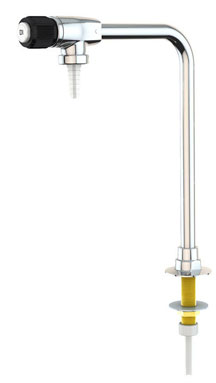- When were (Material) Safety Data Sheets "invented"?
For a history of Safety Data Sheets (dating back to the ancient Egyptians!), see
Aaron Kaplan's presentation at http://jrm.phys.ksu.edu/Safety/kaplan.html.
OSHA began requiring MSDS's for hazardous materials effective May 26, 1986 under 29 CFR 1910.1200, the OSHA Hazard Communication Standard.
With the 2012 revision of the HCS, OSHA adopted the Globally Harmonized System and started phasing in SDS's from 2013 through 2016. The differences between MSDS's and SDS's are discussed earlier in this FAQ.
A comparison of the 1994 and 2012 HCS is also available which strikes out the old language in red, inserts new language in green, and has additional commentary on each section.
- What agencies or regulations require us to keep SDS's?
OSHA
The U.S. Government's Occupational Safety and Health Administration (OSHA) is responsible for the Hazard Communication Standard 29 CFR 1910.1200. The purpose of this standard is "to ensure that the hazards of all chemicals produced or imported are classified, and that information concerning the classified hazards is transmitted to employers and employees. The requirements of this section are intended to be consistent with the provisions of the United Nations Globally Harmonized System of Classification and Labeling of Chemicals (GHS), Revision 3. The transmittal of information is to be accomplished by means of comprehensive hazard communication programs, which are to include container labeling and other forms of warning, safety data sheets and employee training."
The Hazard Communication Standard (HCS) specifies the required elements that must be on an SDS among other important data. It is a very readable document, and we suggest that anyone involved with SDS management print out a hard copy for future reference.
Note that under the HCS, an SDS can contain more information than that required by OSHA, but not less.
EPA
Other regulations address SDS's as well. For example, the U. S. Government's Environmental Protection Agency's (EPA) Community Right to Know Law (SARA Title III) is another set of regulations you'll want to consult.
State and Local Agencies
Any number of state and local regulations may (redundantly) require SDS's. Such regulations lie outside the scope of this FAQ.
If you are uncertain as to which laws apply to you, contact both your state and federal EPA and OSHA compliance (not enforcement!) offices.
Other Countries
Regulations similar to OSHA's are found in virtually every country, but these tend to vary slightly. Consult the GHS and International section of this FAQ for more information.
- What organizations are exempt from OSHA's SDS regulations?
Federal OSHA, as a federal agency, does not have jurisdiction over those employed by state, county, city or municipal governments. However, several state plans do cover such public sector employment (as indicated in the quote below, New York is one such state). Quoting federal OSHA:
"States with approved plans must adopt standards identical or comparable to Federal standards [to get federal safety and health funding]. Under its OSHA-approved State plan and in accordance
with Section 27-a of the PESH Act, New York adopts and enforces
occupational safety and health standards in the public sector which are
identical to OSHA's. New York has adopted and is enforcing a Fire
Protection Standard in the public sector which is identical to Federal
OSHA's. Therefore, public schools must comply with the same Fire Protection
Standard as private schools, but the standard is promulgated and enforced
by the State." [See the full text here]
Thus, the key consideration for public sector workers is federal OSHA versus state OSHA. When the federal Occupational Safety and Health Act of 1970 created OSHA, Section 18 allowed for states to come up with their own individual state plans. These state plans are monitored by federal OSHA and must at least meet the federal standards. Many go beyond the federal standards. There are currently 26 state plan states in addition to Puerto Rico and the US Virgin Islands. See http://www.osha.gov/dcsp/osp/index.html for more information on how state plans work and which ones have standards that differ from federal OSHA's as well as a state plan FAQ.
Other states have adopted non-federally funded safety and health programs that cover their state or certain counties, cities or municipalities, so just because your state is not on the list mentioned above, it doesn't mean that OSHA regulations (or their equivalents) are not in place! In addition, state or local "Right-To-Know" laws may (or may not) include specific hazard communications type requirements (such as SDS). And, of course, SARA Title III also covers SDS's.
Regardless of the state/federal coverage, your employer's insurance carrier may stipulate that your workplace meet OSHA standards even if they are not required to statute. And, of course, from a legal liability standpoint meeting (or exceeding) OSHA standards is probably a good idea.
Bottom line: If you're not sure what laws are applicable in your situation, especially if you work for a public agency, contact your local OSHA compliance office; they might be able to direct you to appropriate agencies.
- What is the minimum amount of material that requires an SDS?
The HazCom standard does not specify a minimum amount, for good reason. Some chemicals are exceedingly dangerous in even milligram quantities while others are not. There is no way that the Standard could anticipate and determine the potentially toxic effects of over 114,000,000 known chemical compounds (as of June 2016) and their mixtures.
The only exception for this is when the material can release only a "very small quantities", i.e. a trace amount of hazardous chemical under normal conditions of use or a forseeable emergency. That does not mean a small amount. For example, in an OSHA Interpretation titled "Release of hazardous chemicals from gas calibration bottles", OSHA says that 2 ounces of ammonia requires an SDS.
When trying to make a case for "trace amount", one has to consider if it is possible for an individual to be exposed to an amount of material that could cause harm. In the case above, an individual could conceivably release the contents of the cylinder into his/her face, causing harm. Likewise, the continuous release of just 25 ppm of hydrogen sulfide could cause serious harm!
Remember, OSHA does does not define something as hazardous in a particular amount. Per OSHA:
"The HCS addresses chemical hazards which are inherent properties of the hazardous chemical and would exist no matter what quantity was present in the workplace. Risk is a function of the inherent hazard and level of exposure. A substance either is or is not a hazardous chemical; the HCS definition cannot be read to indicate that a substance could be a hazardous chemical in some concentrations but not in others."
To summarize, an SDS is required in almost every case unless there is essentially no way that the amount of material could cause harm. For additional information see this 1993 OSHA interpretation as well as this 2005 interpretation titled "Requirement to disclose all chemicals having scientific evidence that they pose a health risk regardless of concentrations present in the product on the MSDS."
- What items do (or do not) require SDS's?
OSHA requires SDS's ONLY for materials that a) meet OSHA's definition of hazardous and b) are "known to be present in the workplace in such a manner that employees may be exposed under normal conditions of use or in a foreseeable emergency".
THE FOLLOWING ITEMS **MAY** BE EXEMPTED Hazard Communication Standard 29 CFR 1910.1200 (OSHA wording is in green). If a material is hazardous and not listed below, then it generally requires an SDS:
Exempt: Articles
An "article" means a manufactured item: (1) which is formed to a specific shape or design during manufacture (2) which has end use function(s) dependent in whole or in part upon its shape or design during end use; and (3) which does not release, or otherwise result in exposure to, a hazardous chemical under normal conditions of use. Any product which meets the definition of an "article," would be exempt from the requirements of the Standard.
For example, a roll of copper electrical wire sold to a hardware store would fit this definition of an article and would not require an SDS. However, a load of copper ingots being shipped to a computer chip manufacturer would not meet the definition of an article and would require an SDS.
The definition has been amended to permit the release of "very small quantities, e.g., minute or trace amounts" of a hazardous chemical and still qualify as an article provided that a physical or health risk is not posed to the employees (59 F.R. 6146). In evaluating an article, one must consider the health risk which exposure to that article presents. (The term "risk" as opposed to "hazard" is used here, since the hazard is an inherent property of the chemical and exists no matter the quantity of exposure. To be exempted as an article, exposure must not pose a risk to employee health.)
Note that OSHA cannot make an across-the-board determination of a products' exclusion as an "article." The standard's definition by its very wording imposes the need to make case-by-case evaluations. Consequently, a blanket exemption for specific products cannot be given by OSHA.
Exempt: Food, Food additives (colors, flavors, fragrances), Alcoholic Beverages
Food and food products are...not totally exempt from coverage under the provisions of the HCS.
Exempt items generally include food or alcoholic beverages which are sold, used, or prepared in a retail establishment (such as a grocery store, restaurant, or drinking place), and foods intended for personal consumption by employees while in the workplace.
HOWEVER: if, under normal conditions of use, [the] product could result in a hazardous exposure situation for downstream employees who will be working with or otherwise handling that product then an SDS is required. For example, flour dust poses an explosion hazard and would require an SDS.
Exempt: Cosmetics
Cosmetics which are packaged for sale to consumers in a retail establishment, and cosmetics intended for personal consumption by employees while in the workplace are generally exempt.
Therefore, your supermarket doesn't need SDS's if they sell prepackaged cosmetics, but your local beauty salon (which uses these occupationally) or a cosmetic manufacturing plant would require SDS's.
Note: The US Food and Drug Administration (FDA) has very little oversight over cosmetics. See FDA Authority Over Cosmetics: How Cosmetics Are Not FDA-Approved, but Are FDA-Regulated at the US FDA. Also see this New York Times article from August 7, 2017, For Cosmetics, Let the Buyer Beware.
Exempt: Drugs and Pharmaceuticals
Drugs regulated by the U.S. Food and Drug Administration (FDA) are covered by the HCS. However, section (b)(6)(vii) of the HCS exempts FDA drugs when in solid final form, such as tablets or pills, for direct administration to the patient.
That section exempts any drug, as that term is defined in the Federal Food, Drug, and Cosmetic Act (21 U.S.C. 301 et seq.), when it is:
- in solid, final form for direct administration to the patient (e.g., tablets or pills)
- drugs which are packaged by the chemical manufacturer for sale to consumers in a retail establishment (e.g., over-the-counter drugs)
- drugs intended for personal consumption by employees while in the workplace (e.g., first aid supplies)
Examples of those needing SDS's for drugs would include pill manufacturing facilities and pharmacies (if the drug is compounded, crushed etc.).
Note: Remember that SDS's are not meant for consumers. Given the likelihood of patient confusion, most drug companies do not make their SDS's freely available to the general public. SDS's for drugs are the most difficult to find on the Internet and usually require direct contact with the manufacturer.
Exempt: Hazardous Wastes and Remediation
The HazCom standard does not apply to
Tip: Be certain that you properly label and account for your waste materials. For example, a bottle labeled "Used paint thinner" would still require an SDS, but once you call it "Hazardous Waste" it Officially becomes waste and subject to waste regulations such as the RCRA.
Exempt: Tobacco and tobacco product
The HazCom standard does not apply to tobacco and tobacco products. Therefore, these do not generally require SDS's.
Tobacco and safety are mutually exclusive anyway...
We have no further information concerning the HazCom standard and tobacco. Please contact us if you can enlighten us.
Exempt: Wood and lumber
The standard does not apply to wood or wood products, including lumber which will not be processed, where the chemical manufacturer or importer can establish that the only hazard they pose to employees is the potential for flammability or combustibility (wood or wood products which have been treated with a hazardous chemical covered by this standard, and wood which may be subsequently sawed or cut, generating dust, are not exempted)
Hardwood dusts pose a carcinogenic hazard. Likewise, wood preservatives such as chromium copper arsenate (CCA) also pose hazards. In each case, an SDS is required.
For comprehensive information about wood dusts in the workplace, see OSHA's Wood Dust Information Page.
Exempt: Consumer Products
The HCS exempts any consumer product or hazardous substance, as those terms are defined in the Consumer Product Safety Act (15 U.S.C. 2051 et seq.) and Federal Hazardous Substances Act (15 U.S.C. 1261 et seq.) respectively, where the employer can show that it is used in the workplace for the purpose intended by the chemical manufacturer or importer of the product, and the use results in a duration and frequency of exposure which is not greater than the range of exposures that could reasonably be experienced by consumers when used for the purpose intended.
For example, if one uses window cleaner in the workplace to occasionally clean a window then the employer is not required to keep an SDS on this material. However, if it is the employee's duty to clean windows all day long in an occupational fashion then an SDS would be required.
It is the employer's responsibility to establish that the frequency is equivalent to typical consumer use. OSHA inspectors will question your employees to verify this claim, so do not be deceptive; the penalties for such willful violations are significant.
Exempt: Nuisance Particulates and Dusts
The HCS specifically exempts nuisance particulates where the chemical manufacturer or importer can establish that they do not pose any physical or health hazard covered under this section.
Of course, this is rather redundant. Anything lacking physical and health hazards is not hazardous and, therefore, does not require an SDS.
Note: many dusts, including flour and hardwood dusts, have physical and/or health hazards and would require an SDS. Manufacturers of nuisance particulate are still required to perform a hazard evaluation and determine whether or not their products present any of the specific hazards covered by the HCS. OSHA has reason to believe that a number of these particulate do present physical hazards, such as the potential for fire and explosion, and others may have some health effect, such as irritation. For example, according to a Bureau of mines report entitled, The Explosibility of Agricultural Dust, corn starch and powdered sugar are considered to be "strong" explosion hazards.
Exempt: Ionizing and Non-ionizing Radiation
Radioactive materials are exempt from coverage under the HCS if the only hazard they pose is radiological. However, if the material also possesses physical or health hazard, then an SDS is required. See Occupational safety and health guideline for uranium and insoluble compounds, for example.
Radiological hazards are addressed in at least partial fashion in the Hazardous Waste Operations and Emergency Response Standard (HAZWOPER, 29 CFR 1910.120), the Bloodborne Pathogens Standard (29 CFR 1910.1030) and the Respiratory Protection Standard (29 CF 1910.134) (and possibly others).
Exempt: Biological Hazards
Biological hazards (biohazards, biohazardous materials) are exempt from coverage under the HCS if the only hazard they pose is biological. However, if the material also possesses physical or health hazard, then an SDS is required.
Examples of biohazards include microbes, anthrax, vaccines, and cell cultures.
Note: Biological hazards are addressed in at least partial fashion in the Hazardous Waste Operations and Emergency Response Standard (HAZWOPER, 29 CFR 1910.120), the Bloodborne Pathogens Standard (29 CFR 1910.1030) and the Respiratory Protection Standard (29 CF 1910.134) (and possibly others).
Exempt: Office and School Supplies
According to the first OSHA interpretation listed below, "...clerical workers...may not be subject to the requirements of the HCS. Office workers who encounter hazardous chemicals only in isolated instances are not covered by the rule. The Occupational Safety and Health Administration (OSHA) considers most office products (such as pens, pencils, adhesive tape) to be exempt under the provisions of the rule, either as articles or as consumer products. For example,...[consider]...copier toner. OSHA has previously stated that intermittent or occasional use of a copying machine does not result in coverage under the rule. However, if an employee handles the chemicals to service the machine, or operates it for long periods of time, then the program would have to be applied."
For example, if an employee uses a solvent to clean a typewriter once a year, that situation does not require an SDS. But if the employee cleans typewriters every day as a repair person, then an SDS is required.
There will likely be occasions when someone will ask for an SDS when one is not required or demand a written statement that no SDS is required. See How should we handle SDS requests for materials that do not require an SDS? for further information.
- How should we handle SDS requests for materials that do not require an SDS?
As discussed above, items that are not hazardous or that are specifically exempted in the OSHA HazCom Standard 29 CFR 1910.1200 do not require an SDS. Section G.2 of the OSHA Inspection Procedures for the HazCom Standard explicitly states the standard requires SDSs only for hazardous chemicals. The HCS does not require manufacturers, or importers to supply SDSs for non-hazardous chemicals.
Nonetheless, some downstream clients may still insist on an SDS in cases where one is not required. If you encounter someone who will not accept a verbal assurance, OSHA has suggested providing a written statement such as "This product is not considered to be or to contain hazardous chemicals based on evaluations made by our company under the OSHA Hazard Communication Standard, 29 CFR 1910.1200." This gives the requesting party something that they can put in their files and saves the manufacturer from needless work. For items that are specifically exempted from coverage under the Standard, your statement should reflect the specific exemption(s) and the specific paragraph(s) of the standard which applies.
On the other hand, you may receive an SDS for something that is truly not hazardous. For example, Amerex has an SDS for deionized water used in water mist fire extinguishers. According to the OSHA Inspection Procedures for the HazCom Standard section G.4.b, if an SDS is provided for a non-hazardous material, the receiving party is not required under HCS to maintain that SDS.. However, your attorney may advise you to keep it anyway just to be sure.
For more information see this OSHA interpretation letter titled Application of the Hazard Communication Standard to art materials industry.
- Who do I have to give an SDS to and what is "downstream flow"?
As mentioned previously and discussed below, manufacturers and distributors are under no OSHA obligation to supply SDS's to consumers. We encourage manufacturers to make SDS's freely available to everyone, but suggest that the sheets carry a notice explaining that SDS's are meant for occupational use, not consumer use.
The OSHA Hazard Communication Standard 29 CFR 1910.1200 requires a "downstream flow" of information. For example, the original manufacturer or importer, Employer A, must create an SDS for any hazardous chemical that they produce. When they ship that to a commercial customer or distributor, Employer B, they must send the SDS to Employer B. If Employer B then ships the chemical to another firm, Employer C, it is Employer B's responsibility to pass the SDS "downstream" to Employer C. In other words, the information flows:
Employer A  Employer B
Employer B  Employer C
Employer C
Note: While this flow diagram indicates "Employer C", an upstream supplier might ship a material to more than one physical location for a particular downstream employer. In such cases, the SDS must be sent to each location where the material is used, not simply the employer's main office. See Responsibility of chemical manufacturers and importers to provide MSDSs to one or more establishments owned and managed by same employer.
According to this OSHA intrepretation titled The acceptability of your "FAX-on-demand" system for providing copies of material safety data sheets (MSDS):
Your primary obligation in supplying MSDSs is to your direct customers, that is, your distributors. You must provide a copy of the MSDS with the first shipment to each of your direct customers, and, if the MSDS for one of your products is updated, you must send the updated MSDS with the next shipment of the product to that direct customer. Your distributors are, in turn, responsible for supplying a copy of the MSDS with the first shipment to each of their direct customers, and so on...
However, because this chain of information transmission through the distributor can sometimes be broken, OSHA has added the requirement that manufacturers must provide a copy of the MSDS to other "downstream" employers upon request. Your
"FAX-on-demand" system can be used to fulfill this requirement. Please refer to revised language in paragraphs (g)(6) and (g)(7) of the standard for additional clarification on requirements for providing MSDSs.
In general, if you need an SDS, you should get it from your "upstream" supplier. If that is not possible, then the manufacturer must supply one on request (as long as you are an employer that requires an SDS under the Hazard Communication Standard).
See also: Manufacturer and employer responsibilities when providing MSDSs electronically for more on downstream flow and manufacturer responsibilities.
- What are my rights to an SDS?
The answer depends on your role in the request:
Consumers: As stated previously, many manufacturers or distributors are happy to give an SDS to anyone who asks but they are under no OSHA obligation to distribute these to consumers. See this OSHA interpretation letter and the downstream flow entry above for more information about how SDS's are supposed to be distributed.
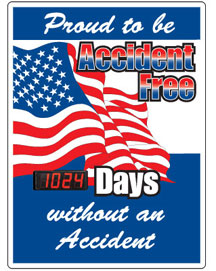
Create a culture of safety in your workplace with
safety scoreboards from Safety Emporium.
Dozens of homeowners have asked us about demanding/requesting SDS's from contractors whose work they believe has caused them harm - for example, fumes, odors and/or illnesses from newly installed carpet, flooring, sealants etc. Although most contractors will gladly provide an SDS, they are under no regulatory obligation to do so. If you are certain that the material meets the OSHA definition of hazardous then the contractor is required to have an SDS for his employee's use. If not, he is in violation of OSHA regulations. Just the threat of reporting the contractor to OSHA for willful non-compliance is probably enough to change his mind. Alternatively, a letter from an attorney might work, too. If you have no luck with the contractor, try the original manufacturer's web site or toll-free number. But if you want to know for certain whether there are potentially hazardous fumes in your house, have the air professionally tested. Look under "Laboratories, Analytical" or "Laboratories, Testing" in your local yellow pages.
If you are intent on having copies of SDS's for all hazardous chemicals used during a home repair project, you should list this as an explicit requirement in the written contract. Of course, SDS's aren't meant for consumers, but they seem to give some folks a peace of mind.
What about those signs you see in home improvement stores about SDS's being available on request? Yes, SDS's are available there, but under the "downstream flow" concept and as discussed in paragraph (g)(7) of 29 CFR 1910.1200, the Hazard Communication Standard, the store is only obligated to give them to customers who are employers. Therefore, a consumer who asks may or may not get one, but there is no harm in asking!
Employees. Employees must have "ready access" to SDS's while they are in their workplace. There can be no barriers to access - you should not have to fetch a key, ask a supervisor, submit a request etc. SDS's must be on hand for every hazardous chemical "known to be present in the workplace in such a manner that employees may be exposed under normal conditions of use or in a foreseeable emergency." There are some exceptions to this rule, of course.
Employers. See Who do I have to give an SDS to and what is "downstream flow"? above. Also see How come I don't always get SDS's when I order chemicals...
Contractors. See What requirements are there for contractors or multi-employer sites?.
Former employees. Under the OSHA standard 29 CFR 1910.1020, Access to Employee Exposure and Medical Records, your employer is required to keep a record of your exposure to hazardous materials at work. These "employee exposure records" are to be kept at least 30 years after you terminate employment. 1910.1020 allows employers to use SDS's as part of or in lieu of other sorts of documentation. As described in the previous hyperlink, you or your designated representative (union rep, attorney etc.) have a right to see your records at no cost and to obtain copies. See also our FAQ entry Can I throw away old or outdated SDS's?




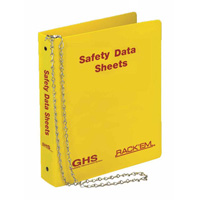
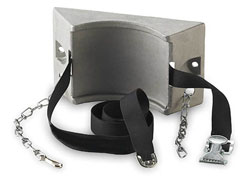
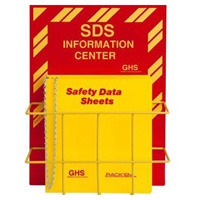
 Employer B
Employer B 